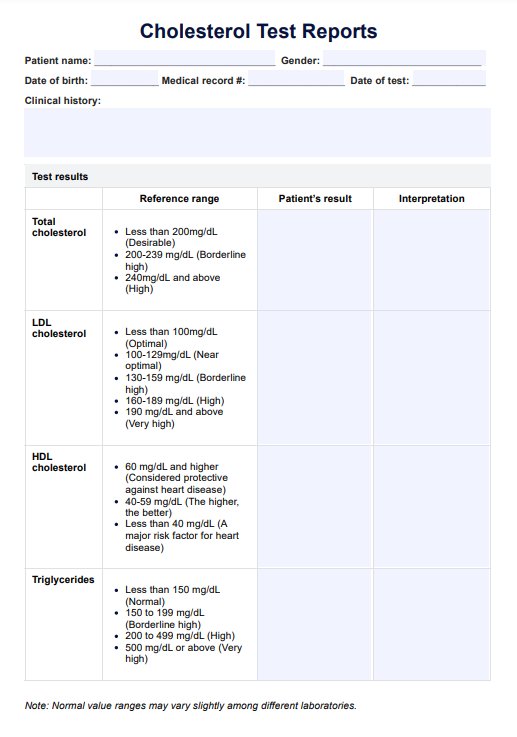Primary care physicians, cardiologists, and other healthcare providers may order cholesterol tests as part of a routine check-up or in response to specific symptoms or risk factors. Additionally, individuals may request a cholesterol test on their own if they are concerned about their heart health or have a family history of high cholesterol.

Cholesterol Test Reports
Download a free Cholesterol Test Report template and easily document your patient's results. Get the PDF template and example now.
Cholesterol Test Reports Template
Commonly asked questions
Cholesterol tests can assess a person's risk of cardiovascular disease and guide treatment decisions. They may be ordered as part of routine health screenings or when a person is experiencing symptoms such as chest pain, shortness of breath, or fatigue. Additionally, cholesterol tests may be used to monitor the effectiveness of cholesterol-lowering medications.
A cholesterol test usually takes a few minutes to complete. The person performing the test will take a small blood sample, typically from a vein in your arm, and send it to a lab for analysis.
EHR and practice management software
Get started for free
*No credit card required
Free
$0/usd
Unlimited clients
Telehealth
1GB of storage
Client portal text
Automated billing and online payments











